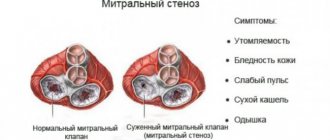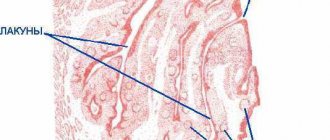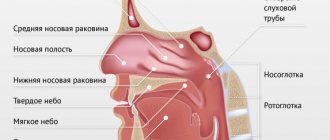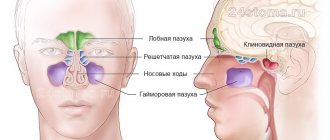What's happened
This is one of the little-studied diseases in which the causes of its occurrence are still unknown. Currently, researchers are testing theories about hereditary predisposition (there are proven cases of the disease among close relatives), about the influence of the environment (. The main marker of sarcoidosis is granulomas in the lungs - these are dense nodules of inflammation in the affected tissues. The definition of the disease is based on them - non-infectious inflammatory a process manifested in the appearance of granulomas in the lungs.
Sarcoidosis (Besnier-Beck-Schaumann disease)
Arthritis
21634 09 December
IMPORTANT!
The information in this section cannot be used for self-diagnosis and self-treatment.
In case of pain or other exacerbation of the disease, diagnostic tests should be prescribed only by the attending physician. To make a diagnosis and properly prescribe treatment, you should contact your doctor. Sarcoidosis: causes, symptoms, diagnosis and treatment methods.
Definition
Sarcoidosis is a chronic systemic autoimmune inflammatory disease of unknown etiology. A characteristic sign of sarcoidosis is the formation of microscopic dense nodules (granulomas) containing a large number of lymphocytes. Sarcoidosis is not an infectious disease and is not transmitted from a sick person to a healthy person.
The disease can affect several organs or body systems at once, but in 90% of cases it is found in the lung tissue and adjacent intrathoracic lymph nodes. At the same time, the spleen, salivary glands, skin, bones, joints, muscles and eyes may be involved in the pathological process. Less common are sarcoidosis of the liver, kidneys, heart, nervous system and genital organs.
Sarcoidosis is a relatively rare disease. The incidence in Russia ranges from 2 to 7 cases per 100 thousand adults and, for unknown reasons, increases in winter and early spring. The largest number of cases are recorded in people under 40 years of age, with women (especially after childbirth) being more susceptible to the disease. Sarcoidosis is more common in non-smokers than in smokers.
Spontaneous recovery is possible in a large percentage of cases.
Causes of sarcoidosis
Manifestations of genetic predisposition to the disease are associated with racial and geographic differences.
Environmental factors play a decisive role in the development of sarcoidosis, which, under conditions of stress and/or genetic predisposition, trigger autoimmune inflammation. Possible external provoking factors (triggers) for the development of sarcoidosis include:
- the presence of a number of infectious agents - mycobacterium tuberculosis with altered properties, propionic acid bacteria, the causative agent of Lyme disease, Helicobacter pylori, chlamydia, etc.;
- silicone, which is widely used for the production of breast implants, shunts, catheters, artificial joints, etc.;
- dental amalgam, vaccine components, dermal fillers from the arsenal of plastic surgery, metal implants, etc.;
- dust with impurities of metal particles (aluminum, gold, copper, cobalt, zirconium, beryllium, titanium), construction and garden materials, chemical fertilizers, talc, etc.;
- exposure to ink in the toner of a laser printer and copy machine during prolonged contact or work in printing plants;
- intoxication with chemical reagents in people whose profession involves close interaction with these substances;
- plant pollen, mold;
- prolonged exposure to allergens when the body’s immune defense is impaired;
- the use of interferons and interferonogenesis inducers in the treatment of a number of viral and tumor diseases.
Classification of sarcoidosis
According to ICD-10, sarcoidosis belongs to class III “Diseases of the blood, hematopoietic organs and certain disorders involving the immune mechanism.”
Classification of sarcoidosis by stages:
Stage 1 – enlargement of intrathoracic lymph nodes, lung tissue is not changed;
Stage 2 – the lymph nodes in the roots of the lungs and in the mediastinum are enlarged, changes (granulomas) appear in the lung tissue;
Stage 3 – changes in lung tissue without enlarged lymph nodes;
Stage 4 – pulmonary fibrosis (lung tissue is replaced by dense connective tissue, respiratory function is irreversibly impaired).
According to the course of the disease:
- spontaneous regression;
- regression during treatment;
- stabilization of the condition (spontaneous or induced by therapy);
- progression, undulating course, relapse.
Sarcoidosis is classified according to location:
- intrathoracic lymph nodes;
- lungs and intrathoracic lymph nodes;
- peripheral lymph nodes;
- lungs;
- respiratory system in combination with damage to other organs (most often the skin);
- generalized with multiple organ lesions and characterized by a phasic course.
Symptoms of sarcoidosis
Chronic sarcoidosis occurs for many years with few symptoms or asymptomatic. The absence of pronounced clinical manifestations is associated with reduced activity of long-term inflammation.
Juvenile sarcoidosis (Blau syndrome) is a genetic disease that develops in children under 6 years of age and manifests as arthritis, dermatitis and uveitis.
The acute course of sarcoidosis is characterized by a sudden onset, high activity of the inflammatory process and spontaneous regression within several months (in most cases). Acute sarcoidosis includes:
- Löfgren's syndrome, which is characterized by fever, pain and swelling of the joints, erythema nodosum (inflammation of the capillaries with redness and hardening of the skin) and bilateral lymphadenopathy of the roots of the lungs;
- Heerfordt-Waldenström syndrome, in which the patient experiences fever, enlarged parotid salivary glands, uveitis (inflammation of the pigmented inner lining of the eye) and facial paralysis (Bell's palsy as an optional symptom).
Another characteristic complaint may be increasing inspiratory dyspnea (lack of air) with difficulty breathing.
Among the clinical manifestations of acute sarcoidosis, general symptoms can also be identified: fever to subfebrile levels, weakness, malaise, night sweats, anorexia, weight loss, etc. In addition, there are characteristics of the disease associated with damage to a particular organ or group of organs.
- With pulmonary sarcoidosis, the patient complains of cough, periodic mild chest pain, shortness of breath and moist rales.
- Damage to the cervical and subclavian lymph nodes is manifested by compaction at their location. With sarcoidosis of the abdominal lymph nodes, indigestion and abdominal pain may occur.
- With ocular sarcoidosis, the eyelids are affected, vision is reduced, the patient complains of a foreign body sensation and mild pain in the eyes.
- Sarcoidosis of the skin is accompanied by dryness and flaking of the skin, pigmentation disorders, ulcers, and hair loss. Skin manifestations often begin in areas of scar tissue (so-called revitalized scars). Specific symptoms appear as small plaques on the skin with a reddish tint (mainly in the upper body) or lupus pernio, which is characterized by the growth of fleshy brown or purple lesions (most aggressive on the face).
- Sarcoidosis of the heart occurs simultaneously with damage to the lymph nodes or lungs. Indirect signs: shortness of breath during physical activity, pain in the heart, rapid heartbeat, swelling of the lower extremities, pale skin.
- With sarcoidosis of the ENT organs (ear, nose, pharynx, larynx), the functions of the upper respiratory tract are affected with manifestations of rhinitis. Granulomas form on the mucous membrane or cartilage of the sinuses.
- Sarcoidosis of the gastrointestinal tract most often affects the stomach, less often the small intestine. The symptoms are erased, manifested in the form of gastritis, colitis and duodenitis.
- In rare cases, complaints may be neurological in nature: sensory or motor disorders with damage to the central nervous system, decreased sensitivity threshold with peripheral neuropathy. Epileptic activity may develop if the brain is affected.
Diagnosis of sarcoidosis
Since the etiology of sarcoidosis remains unknown, the disease remains a diagnosis of exclusion. The examination algorithm includes:
- collecting anamnesis, including environmental and occupational factors, symptoms;
- physical examination;
- plain X-ray of the chest organs;
Symptoms of pulmonary sarcoidosis
The disease can occur without pronounced symptoms for a long time, up to large volumes of affected tissue.
Frequent symptoms are:
- increased fatigue,
- cough,
- slight increase in body temperature
- the appearance of red itchy spots on the skin of the legs (erythema nodosum)
Surprisingly, patients with sarcoidosis often come to the doctor not with the listed symptoms, but with complaints of discomfort in the eyes (conjunctivitis, dryness), skin lesions (brown, yellow plaques appear), based on these and other indirect signs, an experienced specialist will be able to diagnose sarcoidosis even in the early stages.
Treatment
This disease is interesting because the patient almost plays the lottery. The fact is that about 30% of cases of the disease resolve on their own and without any additional intervention. And one could say that there is no need to rush, you can wait until everything gets better on its own. But the problem is that the same 30% of patients face serious complications of sarcoidosis - even death, if help is not started on time. So in this case, you definitely shouldn’t refuse treatment or delay visiting a doctor. No one knows what percentage of patients it will fall into, and delaying time can be truly dangerous.
It is important to understand that when the disease progresses without complications, doctors often leave time for observation. They analyze the condition of patients and understand that in some cases it is necessary to wait and see how the disease develops. And only in a situation where it is clear that the body cannot cope on its own, treatment is prescribed.
Treatment of sarcoidosis includes steroid hormones, anti-inflammatory drugs, immunosuppressants, antioxidants, and vitamins. The patient is also prescribed a protein diet (when taking hormonal medications) and is recommended to reduce the amount of salt. An important point for recovery is the complete cessation of such a bad habit as smoking.
After the onset of remission, the patient remains registered for several years and is observed by his attending physician.
If you have already been diagnosed or suspect that you have pulmonary sarcoidosis, contact the Meditsina JSC clinic in Moscow: our pulmonologists and therapists are always happy to help, advise, prescribe additional examinations and adjust or develop a treatment plan for you.
Diagnostics
The first step is to perform imaging of the chest to detect areas of inflammation and enlarged intrathoracic lymph nodes. Then we need blood tests, sputum tests, and spirometry data, including to exclude the possibility of other diseases with similar symptoms. A biopsy may be required: granulomas are easily distinguishable by microscopic examination.
The attending physician’s task is to detect all foci of inflammation in the body, since the disease can be present not only in the lungs, but also in the spleen, liver, and lymph nodes.
There is an assumption that sarcoidosis is more common in older people (although there are cases of the disease in all age groups); There is also an assumption that women are more often affected. But the specialists of our center, based on their experience, are inclined to believe that women simply show more pronounced symptoms, and in most cases they are more attentive to their health, seeking help from a specialist in a timely manner.
Stages
There are three stages of sarcoidosis. At the first stage, there is an increase in lymph nodes, lung damage is either unilateral or symmetrical. The second stage is characterized by the spread of the disease through the lymphatic tract. The granulomas are still small, and the lung tissue gradually begins to be replaced by tissue of higher density.
At the third stage, connective tissue grows in the alveoli and scars form. The risks of complications such as emphysema and pneumosclerosis are high. Often granulomas grow simultaneously in the lungs and in other parts of the body.
Etiology (causes)
It is assumed that sarcoidosis is provoked by both infectious and non-infectious factors. It is believed that mycoplasma can provoke this disease, like borrelia, chlamydia, and viruses. But during research, the pathogen is not determined. The role of hereditary and genetic factors in the development of sarcoidosis is also considered.
Inhalation of metal dust or smoke can cause granulomatous changes in the lungs that resemble sarcoidosis. Dust from the following substances with antigenic properties can provoke the formation of granulomas:
- barium
- aluminum
- cobalt
- zirconium
- beryllium
- gold
- copper
- titanium
- rare earth metals
Pathogenesis
With pulmonary sarcoidosis, first of all, changes such as lymphocytic alveolitis appear. It is thought to be triggered by alveolar macrophages and T-helper cells, which release cytokines. In some cases, oligoclonal local expansion of T lymphocytes occurs. For the subsequent development of granuloma, alveolitis is required.
Sarcoidosis is considered a granulomatosis that is mediated by an intense cellular immune response at the site of disease activity. Granulomas can form in different organs:
- leather
- lungs
- liver
- lymph nodes
- spleen










